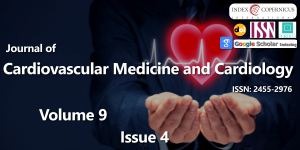Does “biological quantum entanglement” exists?
Main Article Content
Downloads
Article Details
Copyright (c) 2022 Koruga D, et al.

This work is licensed under a Creative Commons Attribution 4.0 International License.
Koch H. Psychocardiology: The spectrum of stress in the genesis of heart disease: a point of view, Research Reports in Clinical Cardiology. 2013; 4: 153-159.
Halaris A. Psychocardiology: moving towards a new subspecialty. Future Cardiol. 2013; 9: 635-640.
Kahl KG, Alvarenga ME, Byrne D. Psychocardiology: Exploring the Brain-Heart Interface. Lausanne: Frontiers Media SA. 2022. doi: 10.3389/978-2-83250-058-3,
Holt RIG, Cockkram CS, Flyvbjerg A. Goldstein. Textbook of Diabetes, Wiley-Blackwell, Chichester, UK, 2010.
Mathews KC, van Holde EK, Biochemistry. The Benjamin/Cummings Publishing Company, Inc., Redwood City 1990.
Ackers GK, Doyle ML, Myers D, Daugherty MA. Molecular Code for Cooprativity in Hemoglobin. Science. 1992; 255: 54-62.
Schuck P. Glycated hemoglobin as a physiological measure of stress and its relations to some psychological stress indicators. Behav Med. 1998 Summer;24(2):89-94. doi: 10.1080/08964289809596386. PMID: 9695900.
Phillips AC. Stress and Cardiovascular Reactivity. In: Alvarenga, M., Byrne, D. (eds) Handbook of Psychocardiology. Springer, Singapore. 2016. https://doi.org/10.1007/978-981-287-206-7_16
Holt RIG, Cockkram CS, Flyvbjerg A. Goldstein, Textbook of Diabetes, Wiley-Blackwell, Chichester, UK, 2010.
Novoselov D, Korotin DM, Anisimov VI. Quantum states entanglement in hemoglobin molecule active center. arXiv:1602.02963v2 [cond-mat. str-el] 17 Feb 2016.





